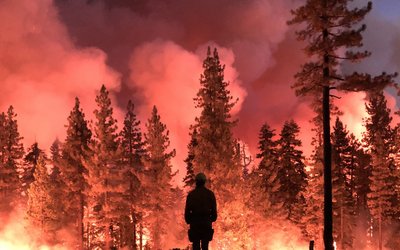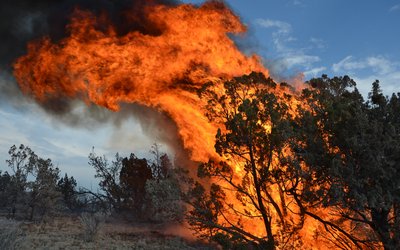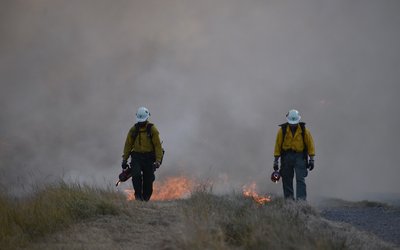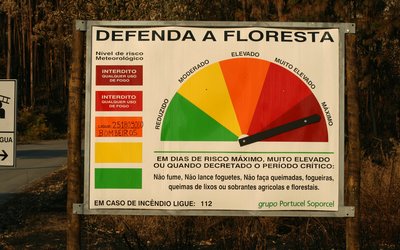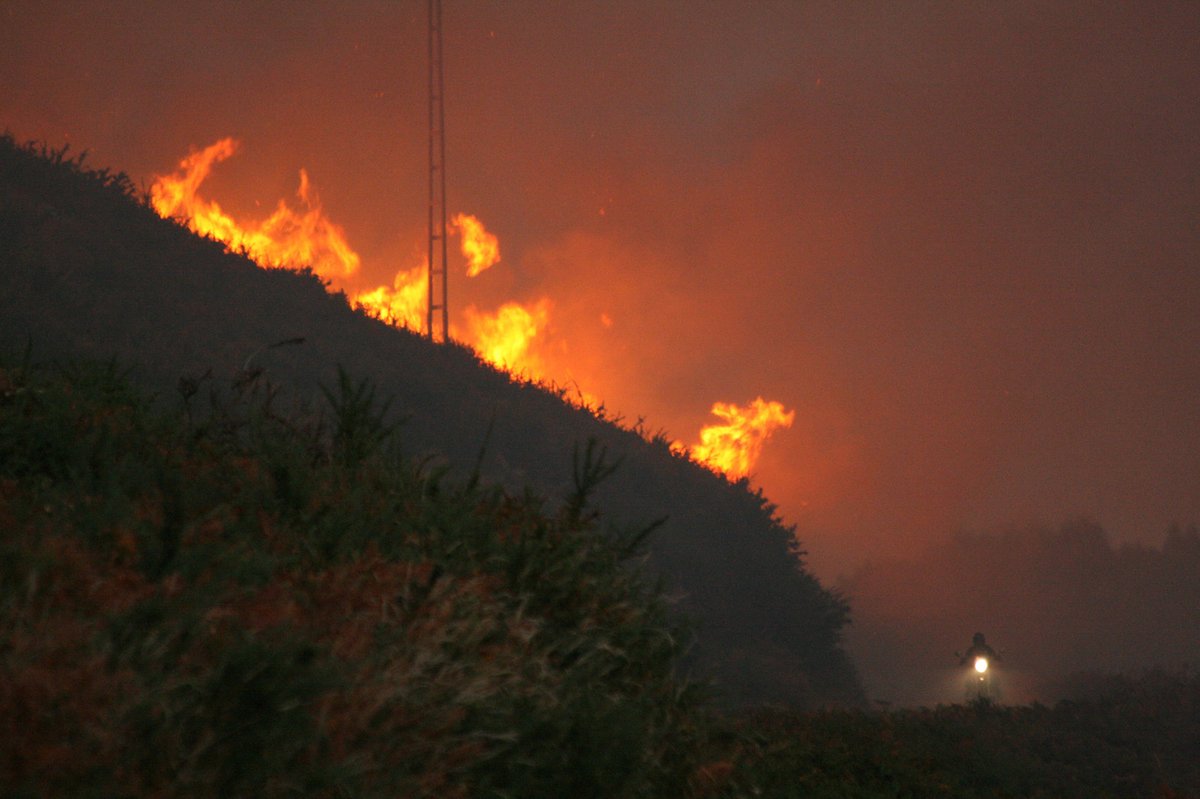
Wildfire in the north of Portugal (photo: Contando Estrelas, www.flickr.com)
Short- and long-term effects
Despite being episodic events, large wildfires account for the bulk of burned area in Spain and Portugal. These wildfires, with burned areas > 500 hectares, can be characterized by the climate and weather conditions that cause them. Climatic conditions over a time scale of seasons to years determine the amount of fuel that feed these fires. Weather conditions in the days or weeks prior to the onset of a fire change the fuel moisture state of especially the fine fuel and litter, and hence their flammability. On a shorter time scale, hourly and daily meteorological variables control fire ignition and propagation.
For the Iberian Peninsula (Portugal and Spain), large wildfires during the period 2001 - 2015 have been characterized by looking at the climate and weather conditions at different time scales that coincided with these events. Knowledge on the causal relations between these conditions and the onset of large wildfires can be used for early warning and preparation. A distinction is made in four types of large wildfires, labelled: ‘heat-driven’, ‘heat wave’, ‘seasonal drought’ and ‘wind-driven’.
Four types of large wildfires
‘Heat-driven’ large wildfires are driven by temperature and dryness of fuels. They are associated with calm winds and sustained hot and dry conditions conducive to low fuel moisture.
‘Heat wave’ wildfires are also driven by temperature and dryness of fine fuels, and associated with calm winds. Contrary to the ‘heat-driven’ type, extremely high temperatures are driving these fires, causing a rapid desiccation of fine fuels and litter, whilst the moisture content of heavy fuels is not low.
‘Seasonal drought’ wildfires are associated with extended drought periods, leading to dry heavy fuels. For this type of wildfire, the spread of the fire is not inhibited by the presence of moist fine fuels. It is the low moisture content of the dry heavy fuels, a result of prolonged drought periods, and the wind that drive the fires.
‘Wind-driven’ wildfires occur on days with sudden warm conditions and very strong winds. These wildfires are especially associated with a sudden drop in relative humidity and the emergence of strong winds during the day of ignition. Temperatures over a period of 30 days prior to the fire also play a role, however.
Dominant type
‘Heat-driven’ wildfires seem to be the dominant type of large wildfires in Spain and Portugal. Second in importance ranks the ‘heat wave’ type. Exceptional heat and drought conditions in 2003 led to one of the worst fire seasons recorded in Portugal.
Wildfire hotspot: halfway Portugal
During the last decades, the bulk of large fires started halfway Portugal near the border with Spain. All four types of large wildfires are common there. Clearly, it is the combination of heat, drought and wind that promotes larger fires. While annual or seasonal long-term climatic variables influence fuel amount, short-term weather in the previous days or weeks changes fuel moisture state, and hourly and daily meteorological variables control fire ignition and propagation.
Fire-fighting strategies
This knowledge on causal factors driving large wildfires can be used for strategies to combat them. The contribution of weather factors may change throughout the landscape promoting different dominant fire spread patterns. Where fuel moisture content holds a leading role, fuel treatments might be promoted to diminish hazard. Where wind speed is driving fire spread then early warning systems and fire-fighting arrangement might have to be prioritized. The recent decadal increases in fuel load and continuity across Mediterranean landscapes have led to propose shifts in management focus from suppression to fire-, fuel-managed, more resilient landscapes.
Source: Rodrigues et al., 2020. Agricultural and Forest Meteorology 280, 107789.

